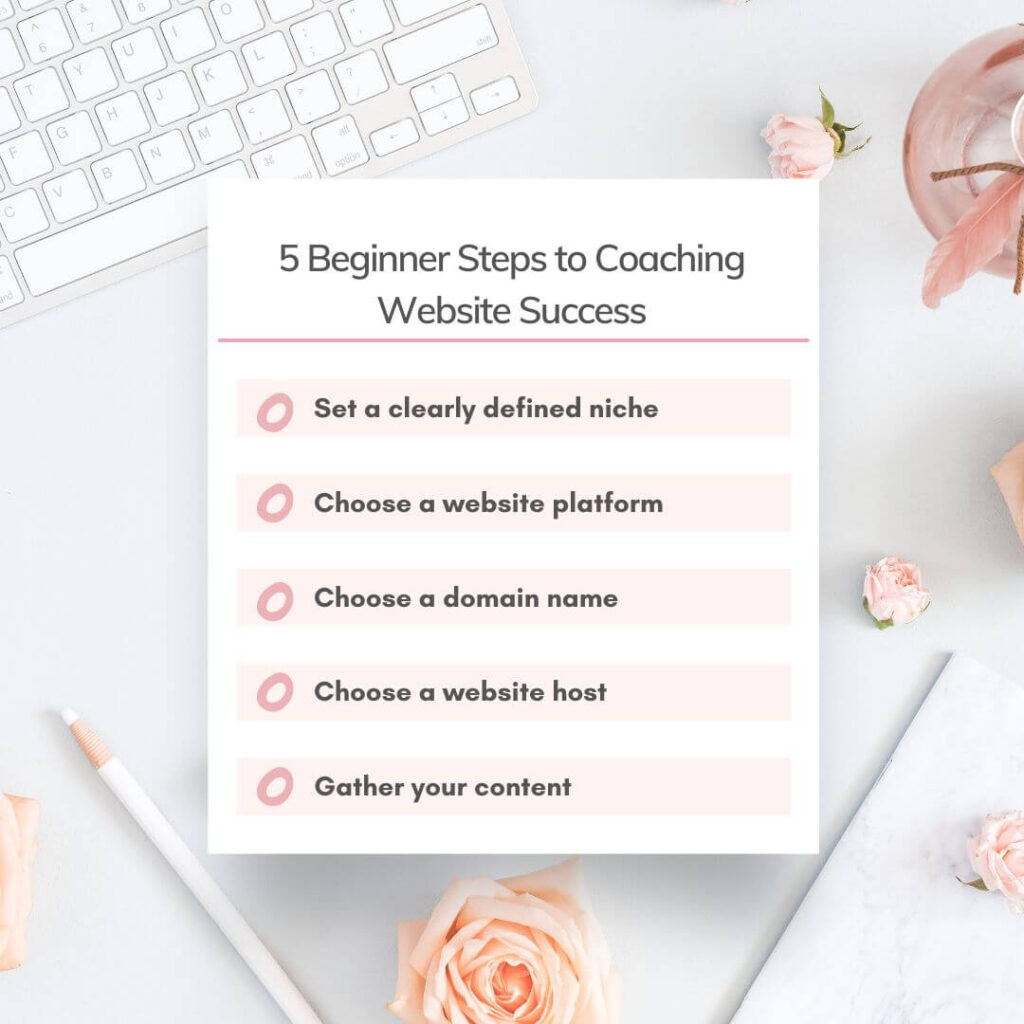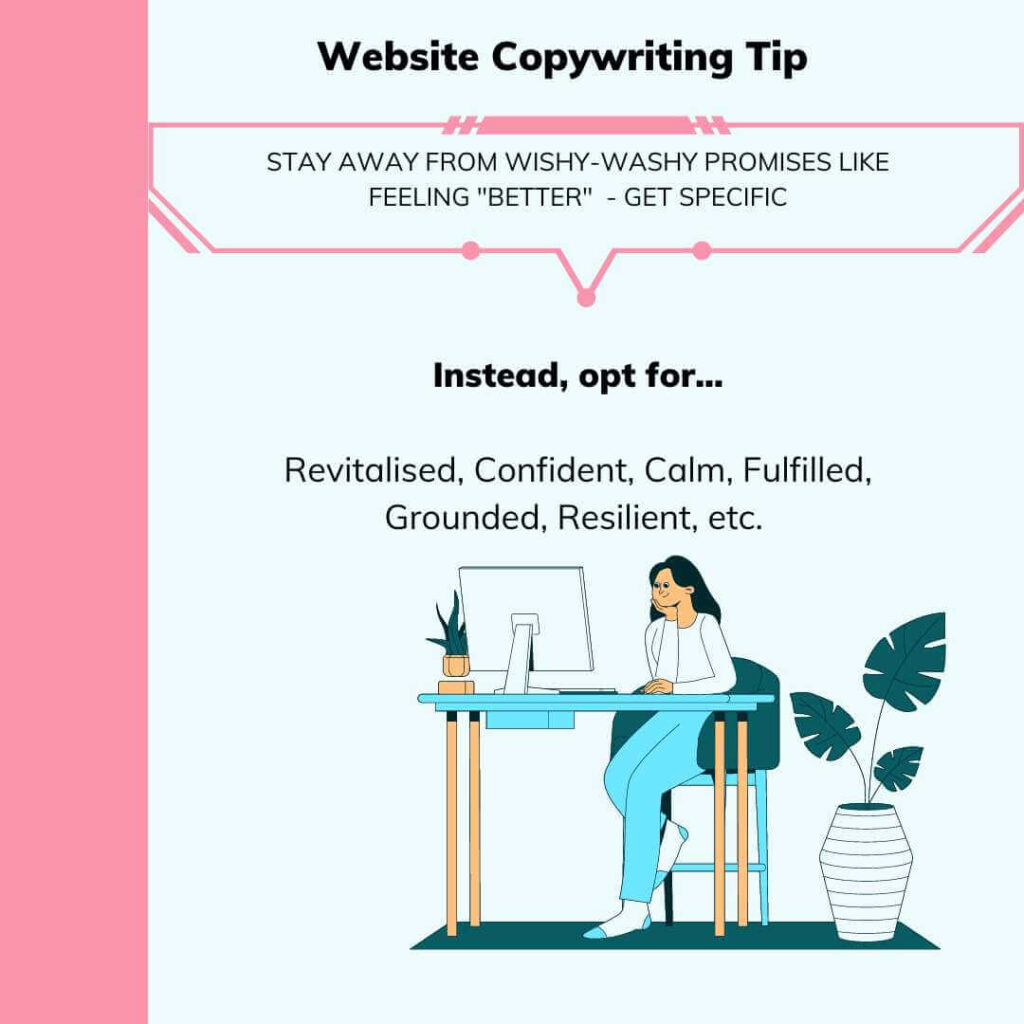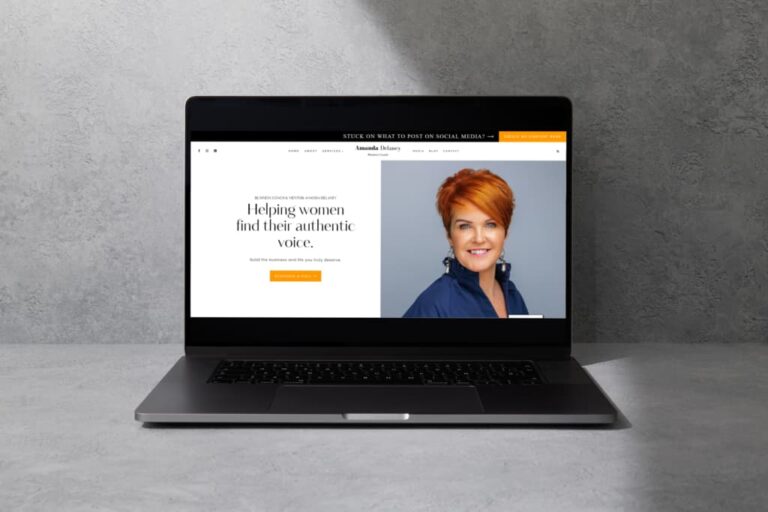Welcome to the complete beginner’s guide to starting a successful coaching website. Today, I’m going to tackle exactly what you need in place to get the most from your website.
You and I know that starting a website can seem overwhelming. However, I will do my best to make starting your website as easy as possible and help you avoid some common mistakes.
In this step-by-step guide, I’m going to show you how to start a coaching website in a completely doable way, without using techy words or jargon so you can easily understand what’s involved.
Once you’ve finished reading this blog post, you will know exactly what you need to have in place to get your website up and running so you can feel confident talking to your web designer about what you need in place to get more coaching clients.
If you have any questions as you’re going through it, you can reach me here and I’ll do my best to answer them.
You’ve landed here because it’s not your first rodeo and you’re ready to get a website that actually works for your coaching or therapy practice – very exciting! I’m here to help you figure out how to make the most of this opportunity.
You’re under no illusion that there’s a (massive) difference between having a hobby business and actually creating a website that helps potential clients to think “Oh, this is who I need to work with.”
This mainly comes down to your willingness to dedicate time and effort to crafting a strategic website (instead of one that just looks good) and promoting your website once it launches.
What I'll cover
What I’ll Cover
Overview Time: What’s a Successful Coaching Website
What is a successful coaching website exactly?
You may be coming from my blog post on coaching website best practices but found yourself wanting a really simple explanation of what exactly is involved in starting a successful coaching website. You’ve come to the right place because I’m about to break things down so they’re clear and understandable.
In the most basic terms, a successful coaching website is one that makes it really clear who you help and how. All making sense so far?
Let’s kick that up a slight notch; it also needs to be built on the right platform so that as your business evolves, your website grows with you.
And it needs to be designed with your business goals in mind – growing your email list or making it easy for clients to book a discovery call, for example.
Still with me? Let’s move on to the steps that will get you on your way.
5 Beginner Steps to Coaching Website Success
The overview of what a successful coaching website actually is showed you where you’re going, but now it’s time to get out the map and point you in the right direction.

Step #1. Set a Clearly Defined Niche
An essential first step in designing a successful coaching website is to have clarity on who you help and how. This is because when someone lands on your two most important pages – your Home Page or your About Page, it needs to be crystal clear that you are the right coach for them.
Without messaging that defines who you work with, you are in danger of potential clients clicking away, even if you would be the perfect fit to help them.

Take my client M. for example. She was an excellent coach, but her starter website was far too vague when it came to how she helped people. Her copy promised to help people feel “better”, but it was hard to figure out what that meant. We analysed her Google stats and noticed that people were quickly clicking away from her home page.

She got much more specific in her messaging and the stats shot up – people were sticking around. She also noticed more people were booking her complimentary discovery call and when she asked them how they heard about her, they mentioned her website.

When your message is clear, it’s more likely that the right people will find your website and they are more likely to stick around because you’re speaking to them.
Some key things that will help you with defining your niche:
- #1 –think about the clients you have loved working with
- #2 – areas of personal interest
- #3 – common struggles you adore helping clients to overcome
When you were just starting out in business, more than likely you wanted to help EVERYONE, am I right?
But now your business has grown you need a compelling marketing message that speaks to your ideal clients and helps them feel seen and understood.
You recognise that it’s harder to connect with your ideal clients if your website is generic and the design and branding don’t resonate with who you want to work with. (That’s right, your website design isn’t so much about your personal tastes as calling in your people).
Sadly, you might have been unfortunate enough to have invested in a website before you truly knew your niche.
I’ve worked with award-winning business owners and one thing I’ve noticed they have in common is the clarity of their messaging and their positioning.
Signs you’ve nailed your niche:
Now that you’ve worked with clients and done your market research you’ve got a better sense of the clients you’ve enjoyed working with, the issues you’re comfortable and qualified to work with and the people you’re yearning to help.
You’re also clear on who isn’t the best fit for what you offer, and who has the budget to be a paying client and you’ve got a deep insight into who you’re talking to and the things that they feel stuck on.
You no longer worry about being too specific when it comes to defining your niche because you’ve got a steady, sustainable business, with lots of word-of-mouth referrals and even some repeat clients who sign up for everything you offer.
You know that niching down isn’t an issue because you’ve figured out that the right people self-select to work with you because your branding and messaging are on point.
Do you know how to define your niche now? Time to pat yourself on the back; you’re on your way to mapping out a much clearer website journey for your visitors!
Step #2. Choose a Website Platform ( hint – just go with WordPress)
Everything feels easier after your first step because writing website copy will be so much simpler when you know who you’re speaking to.
Next up, you have to choose a website platform that will grow with your coaching or therapy practice as it evolves.
Pro tip:
Time and time again, experienced coaches have come to me looking for a redesign or to move to another platform because they’ve outgrown their starter website hosted on Wix, Squarespace, etc. That didn’t matter so much when they were just starting out, but now it’s an issue because they’re counting on having a system with the flexibility to do what they need.
The beauty of WordPress is that you can have a beautifully branded website that truly reflects your business and create the customer journey that attracts and nurtures your people.
Growing your email list, creating Sales pages, landing pages or a shop is no problem when it comes to WordPress because it has the functionality you need.
Even more importantly, when you build your website on WordPress, you own your content.
Ditching your starter website doesn’t go unnoticed – people sit up when they see you up levelling. Don’t feel discouraged because it feels like you’re starting over again – you’re going to be thrilled when you see the final product and realise how much you’ve changed and evolved.
Step #3. Choose a Domain Name
At this point in setting up your successful coaching website, you have an idea about how to make it really clear who you help and the best website hosting platform to choose. What’s left for you to do?
I know you’re probably eager just to start your website.
I completely understand but there are still a few more steps, and you want to make sure you get this right so stick with me.
The next step is to choose a domain name that works for your coaching or therapy practice. Your domain name is your www. address – your little corner of the internet.
You might already have a name in mind but bear with me. I’ve seen clients get this wrong, and it’s a pain because then they have to rebrand.
Even if you already have a domain name (your address on the web) now is an excellent opportunity to make sure it actually works for your business.
Here’s how to choose the right domain name for your website:
- Step #1 Is it easy to spell?
- Step #2 Is it easy to pronounce?
- Step #3 Does it reflect what you currently offer?
- Step #4 Avoid letters, numbers or hyphens, keep it simple
- Step #5 Keep it short and memorable
Keep it concise and avoid outdated SEO “advice” about adding your location – Google got wise to that hack a long time ago!
Step #4. Choose a Web Host
Unfortunately, I sometimes see coaches make the mistake of choosing a host based solely on price.
That’s not a great idea because it can backfire.
You need to make sure you’re choosing a reliable, well-established website host who offers great customer service.
Here are some things to think about to help guide your decision when choosing a website host:
- Do they offer real-time support either on the phone or live chat? (You don’t want to have to wait for support from a website host who isn’t in your timezone)
- When you Google them are the majority of reviews positive?
Here’s an Irish web host some clients have had good experiences with.
Siteground is another web host clients have given positive feedback on.
Step #5. Gather your Content
You’ll need to write your most important pages – your homepage, your about page and the services you offer.
Think carefully about your positioning and how you can display social proof and trust signals.
Make sure that you highlight places you’ve been featured and that credentials, qualifications, accreditations and other accomplishments are clearly displayed.
It helps to work with a strategic web designer who has a deep insight into the therapy and coaching world so that they can advise you on exactly what you need.
It’s an added advantage if they also have business experience and creativity so that they can help you tease out the customer journey that makes sense for you and your business.
Designing your website is not just about making it look good – it’s about creating touch points that craft a clear journey.
With that in mind, you’ll need to make sure your website is easy to navigate. Your services should be clearly displayed and don’t make them guess when it comes to finding a link to booking a discovery call.
So Marie, is this everything I need to have an amazing coaching website ?”
Yes and no, my friend, these steps are a perfect way to get you on your way to having a website that truly reflects your coaching business, but we are missing out on a few key ideas, including:
- Choosing the perfect theme for your website
- Choosing a colour palette that resonates with your ideal client
- More tips on creating a successful coaching website
Key Takeaways
I hope this complete beginner’s guide to starting a successful coaching website will allow you to skip trawling the internet for hours to get all the critical information you need.
If you feel like you need more help planning a strategic website, check out my very affordable course to help you plan a successful coaching website without feeling overwhelmed.
You now have all the info in one place and can get back to it quickly.






